Humanity’s drive to explore has taken us across the solar system, with astronaut boots, various landers and rovers’ wheels exploring the surfaces of several different planetary bodies. These environments are generally hostile to human…
Blog
-

Largest-ever £26 million trial launches across UK to slow Parkinson’s disease
Image: ©Naeblys | iStock The world’s largest clinical trial for Parkinson’s disease has commenced, aiming to identify treatments that can slow or halt disease progression
The world’s largest clinical trial…
Continue Reading
-

Chinese researchers make breakthrough in scanning the universe
Chinese researchers have developed a spectroscopic technique that offers an unprecedented combination of exceptional resolution and a panoramic view, unlocking the potential for sharper, faster and wider scans of the…
Continue Reading
-

100 Nights of Hero review – Emma Corrin leads starry cast in a queer fable with a serious streak | London film festival 2025
Julia Jackman has followed Bonus Track with this queer fantasy-fable that has a streak of earnestness to go with the romantasy energy and gorgeous costumes from designer Susie Coulthard. It’s adapted by Jackman from Isabel Greenberg’s 2016…
Continue Reading
-

Childhood food allergies significantly reduced in US since early peanut exposure guidelines
A major US study shows childhood food allergies have significantly declined since early peanut exposure guidelines were adopted in the past decade.

Childhood food allergies in the United States have significantly declined in the…
Continue Reading
-

The Scope Of Exemption From VERBİS Registration And Notification Obligation Has Been Expanded – Data Protection
Moroglu Arseven are most popular:
- within Litigation and Mediation & Arbitration topic(s)
- in Turkey
…
Continue Reading
-

Son of ex-England footballer Stuart Pearce dies in tractor crash
Dawn LimbuWest of England
 BBC
BBCHarley Pearce was described as a “cherished son and devoted brother” The son of ex-England footballer Stuart Pearce has died in a tractor crash.
Harley Pearce, 21, from Marlborough in Wiltshire, died in the crash in…
Continue Reading
-

New York Knicks First-Team All-NBA players
Making an All-NBA First Team is an incredible individual accomplishment, especially when considering that only five players are awarded with that honor each year. This article spotlights the five New York Knicks who have earned this accolade…
Continue Reading
-
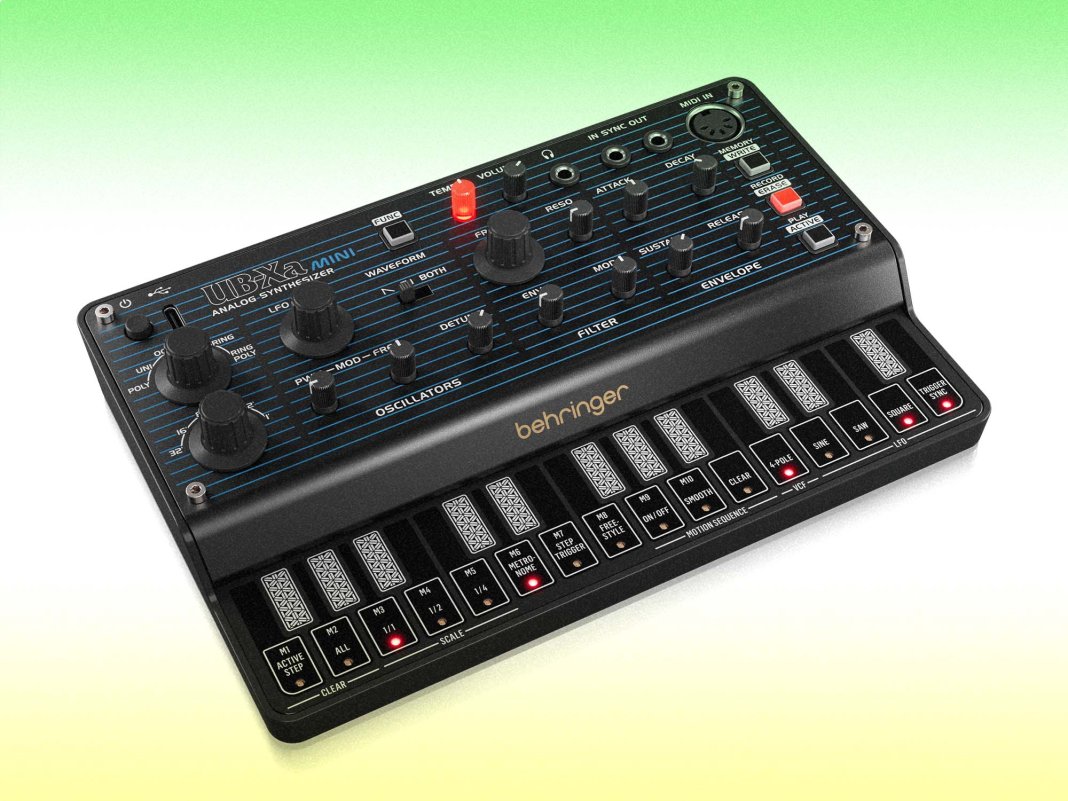
Behringer scales down its UB-Xa synth (again) with the “travel-ready” UB-Xa Mini
Behringer has shrunk its UB-Xa synth once again, with the launch of the UB-Xa Mini. According to the brand, it delivers “big sound in a small package”.
Behringer released its original UB-Xa in 2023, and it later went on to become the
Continue Reading
-
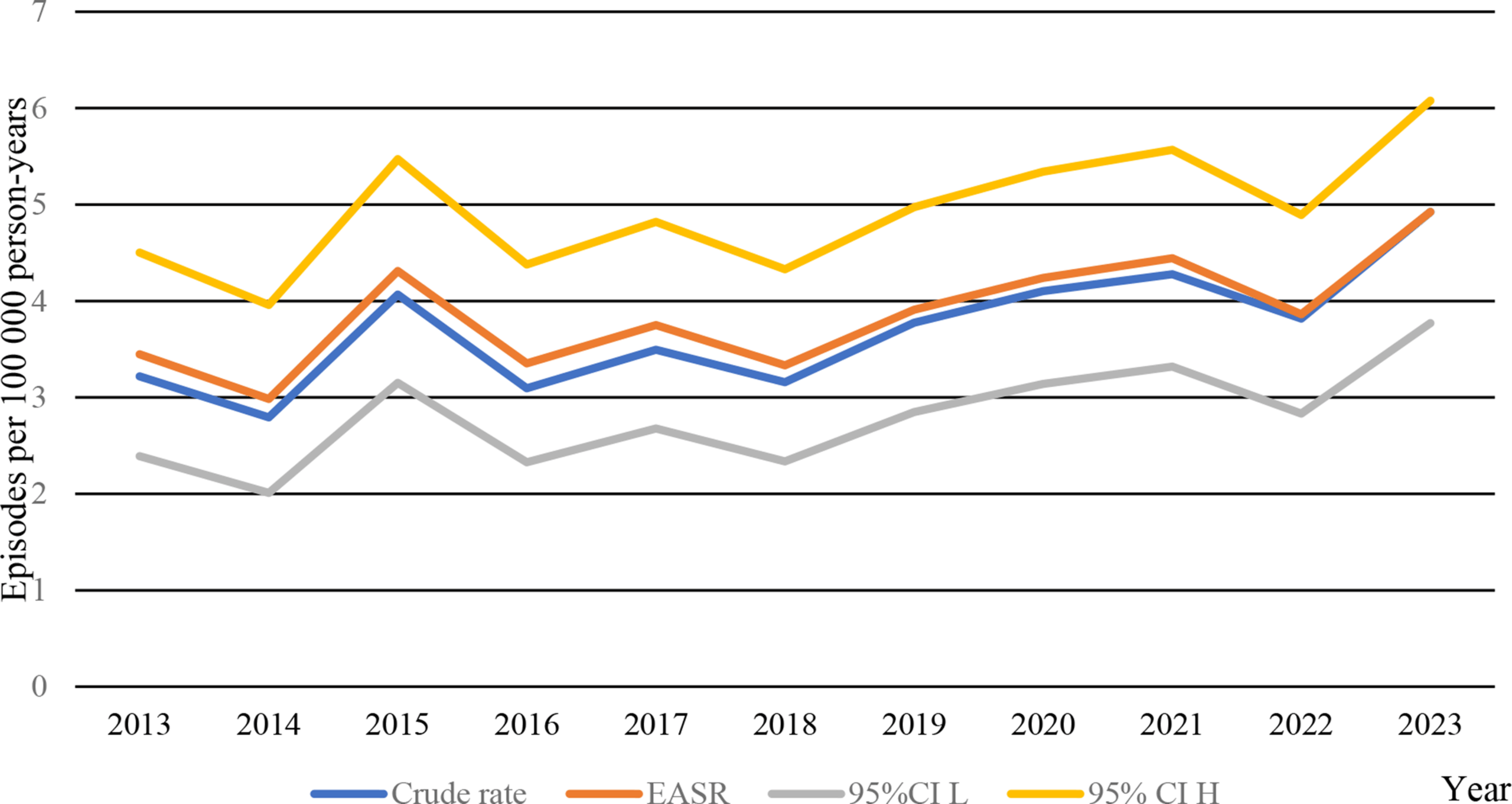
Citrobacter spp. bloodstream infection primarily affects the elderly either hospitalized or closely associated with health care – a population-based observational study with comparisons between C. koseri and the C. freundii complex | BMC Infectious D…
BSI episodes and baseline characteristics
During the study period, there were 554 episodes of Citrobacter spp. BSI in 525 patients. In total, eighteen patients each experienced two episodes of CBSI, four patients had three episodes of CBSI and one patient had four episodes of CBSI. The most common species was Citrobacter freundii complex (47%, n = 261), followed by Citrobacter koseri (42%, n = 233) and Citrobacter non-freundi complex, non-koseri (11%, n = 60). The median age of the included patients was 77 years (range 0-100), and 70% of the patients were men (n = 374). The median CCI was 6 (range 0–15) and 28% (n = 146) of patients were considered immunocompromised (Table 1). Out of all 534 episodes of CBSI, complete medical records were available for 537 episodes (97%).
Table 1 Baseline characteristics and clinical determinants of included patients. All percentages calculated on available data The incidence of Citrobacter koseri increased during the study period
The age and sex-standardized incidence rate of Citrobacter spp. BSI increased from 3.4 episodes per 100 000 person-years in 2013 to 4.9 episodes per 100 000 person-years in 2023 (Fig. 1).
Fig. 1 Incidence of Citrobacter spp. during the study period. EASR = estimated age- and sex standardized rate. CI L = Confidence Interval Low. CI H = Confidence Interval High
The increase was not statistically different from zero, with an APC of 3.2 (95% CI: -0.2% to 6.6%) for the entire study period. Separated into species, the crude rate of Citrobacter koseri and Citrobacter freundi complex increased from 0.9 to 1.9 in 2013, to 2.1 and 2.1 in 2023, respectively (Table A1). While the increase in crude incidence of Citrobacter freundi complex BSI was not statistically different from zero (APC of 2.74 95%CI: -2.3% to 8.1%), the crude incidence of increase of Citrobacter koseri during the study period was statistically significant (APC of 7.56 95%CI: 4.6% to 10.6%). Most BSI occurred in ages 75–84 years (Figure A1).
Microbiological findings and antimicrobial resistance
Resistance rates were statistically significantly higher for Citrobacter freundii compared to Citrobacter koseri for all antimicrobials compared, apart from gentamicin (Table A2). For Citrobacter freundii, resistance rates were 15% (n = 40) for ceftazidime, 7% (n = 18) for ciprofloxacin, 11% (n = 28) for piperacillin-tazobactam, 8% (n = 20) for trimethoprim/sulfamethoxazole and 1% (n = 6) and 2% (n = 9) were resistant against gentamicin and tobramycin, respectively. For Citrobacter koseri, 0.4% (n = 1) strains were resistant towards ciprofloxacin, 2% (n = 4) towards piperacillin-tazobactam and 1% (n = 2) towards trimethoprim/sulfamethoxazole. No strains were resistant towards ceftazidime, gentamicin or tobramycin. No carbapenem-resistant strains were found in the study.
In total, 38% (n = 208) of the BSI episodes were polymicrobial, with 306 pathogens other than Citrobacter detected. The most common microbiological findings in polymicrobial blood cultures other than Citrobacter spp. were Enterococcus spp. (32%, n = 66), Klebsiella spp. (25%, n = 51) and Escherichia coli (24%, n = 49) (Table 2).
Table 2 Microbiological findings in polymicrobial BSI other than Citrobacter species Citrobacter bloodstream infection is most often associated with urinary tract infection
According to the medical records, the most common etiology of Citrobacter BSI was urinary tract infection 48% (n = 245). Urine cultures were obtained in 404 (73%) of BSI episodes, of which 373 (92%) were acquired prior to antimicrobials had been initiated. Out of all 404 urine cultures, 187 (46%) were positive for Citrobacter spp. Primary BSI constituted 24% (n = 134) of all Citrobacter BSI, after which intraabdominal source of infection was common 19% (n = 95) (Fig. 2).
Fig. 2 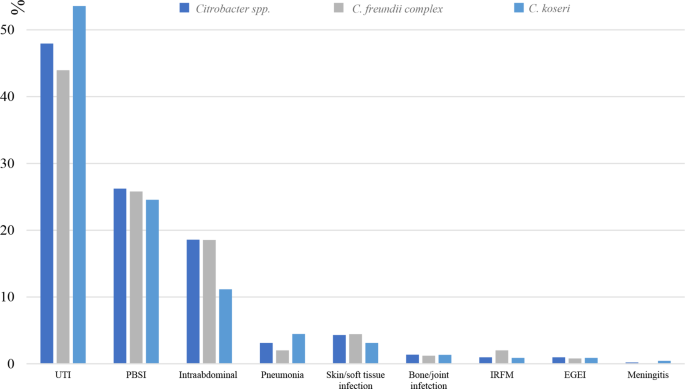
Infection sources for Citrobacter BSI. UTI = urinary tract infection. PBSI = primary bloodstream infection. IRFM = infection related to a foreign material (portacath, central venous catheter or orthopaedic prosthesis). EGEI = endocarditis/graft/endograft infection
Citrobacter bloodstream infection is associated with healthcare
In total, fever at blood culturing or within 48 h was present for 387 (70%) episodes and patients reported shivers in 252 (46%) episodes. The median NEWS score when blood cultures were obtained was 4 (range 0–18), the median CRP value was 108 mg/L (range < 4-563) and the median leukocyte count in blood was 12.9 109/L (0.1–92) (Table 1). In nine episodes (2%) of Citrobacter BSI, patients were managed as outpatients, whereas hospitalization was required for all other BSI episodes. In total, 197 (36%) Citrobacter BSI were community acquired, 81 (15%) episodes were nosocomial and 255 (46%) were health care associated (Fig. 3). The median length of stay at hospital was 8 days (range 0-680).
Fig. 3 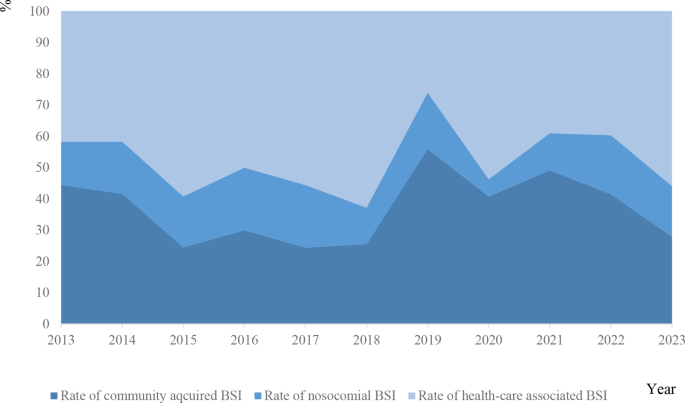
Mode of acquisition of Citrobacter BSI
Outcome
Out of all 554 Citrobacter BSI episodes, septic shock was seen in 25 (4%) episodes and in 38 (7%) episodes patients required intensive care. The 30-, 90-, 180- and 365-days mortality rates were 12%, 18%, 23% and 25%, respectively (Table 3). Although the 90-, 180- and 365-day mortality rates were significantly higher for C. freundii-complex BSI compared to C. koseri BSI, there was no statistically significant difference in mortality rates between C. freundii complex BSI compared to C. koseri BSI in the Kaplan-Meier estimator (Fig. 4). There was no statistical difference in all-cause mortality within 90 days between patients with one episode of Citrobacter spp. BSI (19%) and patients with two or more episodes (22%, p = 0.74).
Table 3 Outcome of Citrobacter spp. BSI. ICU = intensive care unit Fig. 4 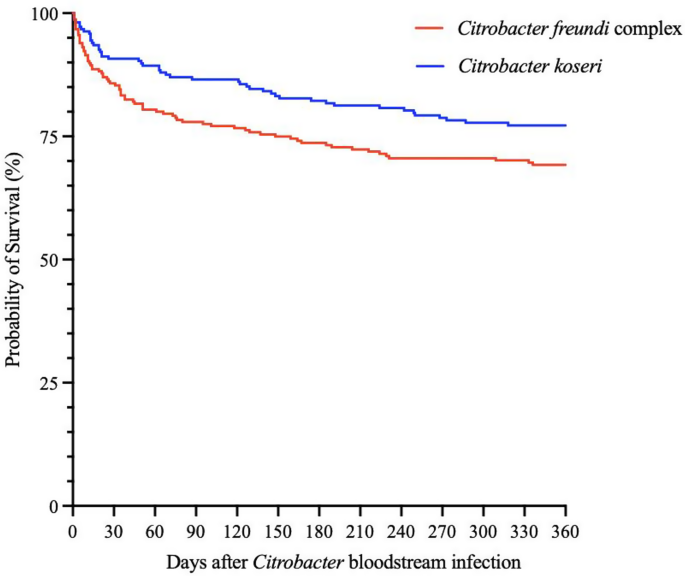
Kaplan-Maier estimates of mortality in C. freundii complex and C. koseri BSI. p = 0.09
Differences in patient characteristics between BSI due to C. freundii complex and C. koseri
There were no differences in age, CCI-score, rate of immunosuppression or substance abuse between patients with BSI caused by C. freundii complex and C. koseri. However, a greater proportion of men suffered from C. koseri BSI compared to C. freundii-complex BSI (p = 0.01). The rate of polymicrobial BSI (p = 0.0001) as well as BSIs with abdominal source of infection (p = 0.03) were greater for C. freundii complex compared to BSIs due to C. koseri. Patients with C. koseri BSI had to a greater extent UTI symptoms (p = 0.005), positive nitrite dipsticks (p = 0.006), and analogous Citrobacter species cultured in the urine (p = < 0.0001) compared to patients with BSI due to C. freundii complex (Table 4).
Table 4 Differences in clinical characteristics between patients with C. freundii complex and C. koseri Univariate and multivariate analysis of variables associated with mortality within 90 days
In the univariate model, female sex, higher CCI score, immunosuppression and longer duration of hospitalisation was associated with death within 90 days of Citrobacter BSI, as was lack of UTI symptoms and non-community acquired infection (Table 5).Similarly, primary BSI and abdominal focus was significantly more common in patients that died within 90 days. In the multivariate model, higher Charlson comorbidity index, immunosuppression, higher CRP, and a urinary tract focus, were independently associated with 90 days mortality, while age, sex, septic shock, polymicrobial culture and fever were not (Table 6).
Table 5 Univariate logistic regression model Table 6 Multivariate analysis of variables associated with mortality within 90 days Continue Reading
